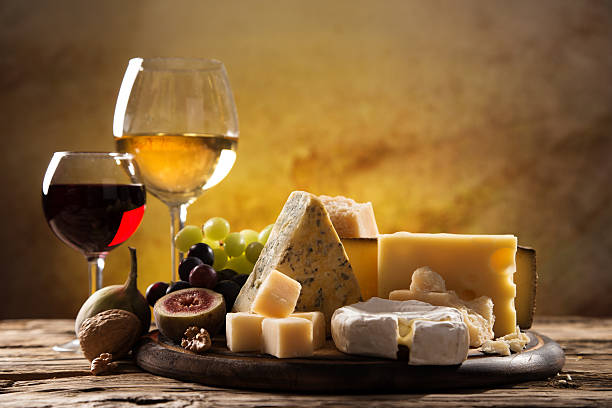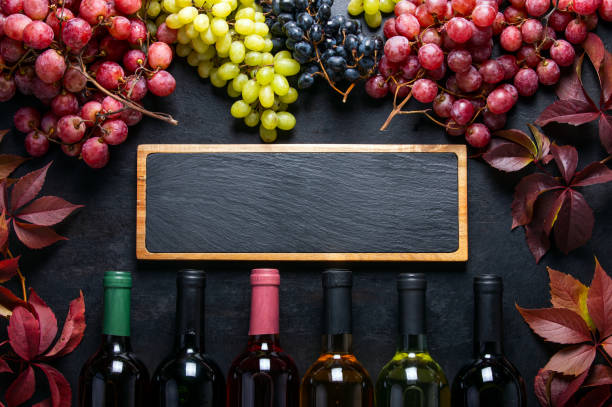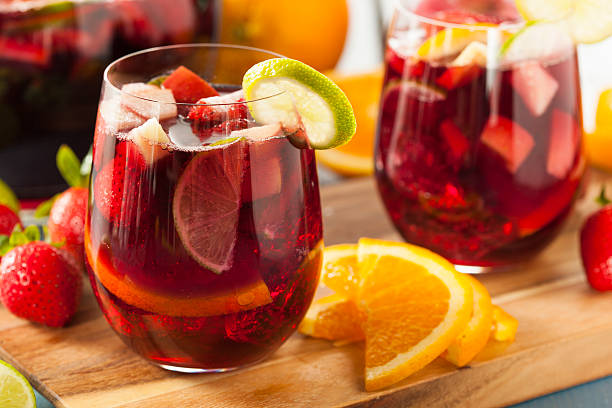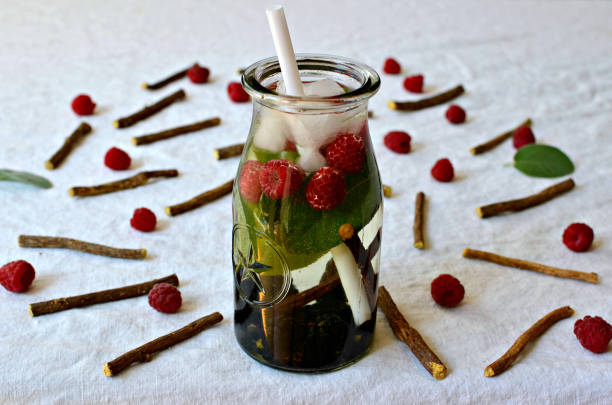You can create impressive grape wines from grapes grown in your backyard or local vineyard. These wines will have a remarkable flavor and body and are sure to impress friends and family.
You can make these bottles for a fraction of the price of the ones you would buy in the store. And if you have grapes growing in your yard, just waiting to be picked up, that’s an amazing deal. Do not hesitate to dive in and enjoy the rewarding hobby of making wine at home. You will join the thousands of people who are proud to make their wine and drink it with pride.
From Vines to Wines is a very good book that covers the topic of making wine with grapes. This book covers not only winemaking but also the vineyard side. This book will help you understand grape wine production better.
Grape Classifications
You can divide grapes into three distinct categories for winemaking:
Native Wild Grapes:
They include grapes like the Muscadine grape (Scuppernong), Fox grape, and Frost grape. Due to their high acidity, they have an extremely intense and assertive flavor. The sugar content is lower than that of most other grapes. The grapes of this class are distinguished by their lack of clusters and the fact that they grow as individual berries rather than in groups.
Native Wine Grapes (Vitis Lambrusca):
They include grapes like Concord, Catawba Niagara, and Delaware. These grapes are native to North America. Although their taste and aroma are not as strong as wild grapes’, the acidity can be high enough to make the juice a bit sharp. The sugar content is much higher than wild grapes.
European Wine Grapes (Vitis Vinifera):
This group includes grapes like Merlot, Cabernet Sauvignon, and Pinot Noir. This group also includes hybrid grapes like Reliance Foch Chambourcin Vignoles. These grapes are only too acidic or sharp in taste on rare occasions. Their sugar content is higher than native wine grapes and wild grapes.
Grapes are the focus.
The type of grape you use will determine how you make wine. Some grapes require only a small amount of water to control their sharp, acidic, or spicy taste. Some grapes will not require any water at all. Some wines may need up to three gallons per five gallons. Many wild grapes are like this. Wild grapes are not only acidic but also have a strong, overpowering flavor.
In some cases, sugar may be required to be added to juice. The wine yeast ferments sugar to produce alcohol. Once the fermentation is finished, the sugar will be gone. If there isn’t enough sugar to feed the yeast, there won’t be enough alcohol. Sugar will be scarce in wild grapes and even marginally in native wine grapes. These grapes do not usually contain a lot of sugar. These mixes will require sugar, but European wine grapes rarely need it.
Making grape wine does not require following a recipe. Instead, it involves making adjustments to the juice you have on hand. It is impossible to use a single wine recipe for all grapes or even one class of grapes.
The Right Grape Mix
How do you know how much water or sugar to add to a fruit juice? It is not difficult to answer this question. Acid Testing Kits can be used to measure and control acidity, and wine hydrometers can be used to measure and control sugar levels. Both kits come with detailed instructions and are easy to use.
Acidity Adjustment for Grape Wine
To determine your current situation, you would first take a reading of the acidity level in the juice. You would then add the same amount of water if the acid levels were twice as high as required. If the acid level was only 10 percent higher than needed, you only had to add 10 percent of water. Acid test kit instructions include acid levels recommended for different types of wine. You can find more information on controlling the acidity of your wine in the article, Getting a Handle on Wine Acidity.
Sugar Level Adjustment
After the acidity is right, you will need to check and adjust the sugar level if required. The wine hydrometer comes with a Potential Alcohol Scale that tells you the amount of alcohol that can be produced from the sugars in the juice. A potential alcohol level between 9 and 13% is the ideal. The European grapes almost always provide enough sugar. Wild grapes and native wine grapes both require significant amounts of sugar. You can read more about how to use a wine thermometer in the article, Getting To Know Your Hydrometer.
Grapes are processed
After you’ve learned a bit about how to adjust the juice to your liking, it’s now time to process the grapes. Red grapes are generally handled differently from white grapes. Red grapes, which are destemmed and crushed with skin and pulp and fermented for several days, are then pressed into wine in a press. White grapes, on the other hand, are crushed without the stems and packed right away. White grapes do not ferment the skin or pulp.
Grapes are crushed, and destemming is done.
The amount of grapes that you have will determine how you destem and crush them. You may need only 20-40 pounds of wild grapes to make 5 gallons. If you are using European wine grapes, the amount of wine is closer to 60-80 pounds per 5 gallons. If you want to do 50 or 100 gallons, you will need to deal with 600 to 1600 pounds. Smaller amounts can be crushed and destemmed by hand. However, when dealing with larger quantities, you should get a Crusher/Destemmer combo or a single crusher if you are only working with whites.
Pressing Grapes
Red grapes, as stated above, are pressed a few days after fermentation. White grapes, however, are pressed before fermentation. Again, the size of the wine press that you buy is determined by how much work will be done. Small tabletop presses are sufficient to handle 50 or 100 pounds of grapes. The tabletop press can take about 15 pounds of grapes at once. If you have larger jobs, look at a larger press such as the R-25 ratchet.
Prepare Grapes for Fermentation
After the grapes are destemmed, crushed, and pressed, and after the sugar and acid levels have been tested and adjusted as required, it’s time to prepare the mixture for fermentation. The mix, which we will now call “must,” should be placed in an open fermenting vessel. Then, you will want to add the following ingredients to the “must”:
Yeast Nutrients
Add one teaspoon per gallon. This isn’t yeast but an energy source that will be added to the yeast later.
Pectic Enzyme
Add 1/8 teaspoon to each gallon. It is used for clarification and, in the case of red wine, to break down the pulp to extract more flavor.
Potassium bisulfite
Add 1/16 teaspoon or 1/4 teaspoon per 4 gallons. This is used to kill wild molds, bacteria, and yeasts that are present in the fresh grapes. Potassium Bisulfite sterilizes the juice over 24 hours and then dissipates into the air. Cover the vessel only with a towel for the first 24 hours.
Wine Yeast
After 24 hours, the yeast can be added. The yeast will also be killed if the wine yeast is not added before the Potassium bisulfite has left. Pour one package of wine yeast per 5 gallons of must and sprinkle it on top of the must.
During the 24-hour waiting period, before adding the wine yeast to the vessel, only a thin towel or an old tee shirt must be used to cover the boat. It is important to ensure that any heavy lids or coverings do not trap the Potassium Bisulfite, which must escape the ship. It would help if you had something to cover the juice in order to prevent gnats or fruit flies from getting into it. But you also want to allow the sulfites the opportunity to escape.
Fermenting Wine Must
Primary Fermentation
You will usually see small patches of foam appear on the surface after 12 hours (or sometimes 24). This is the beginning of fermentation. Over the next two to three days, these patches will grow into a thick layer of foam up to 4 or 5 inches in thickness.
During this period, the primary vessel for fermentation should only be covered with a thin towel. During the first few days, fermentation must breathe. Stir the must daily with a stirring paddle to remove any solids or dried-up formations.




